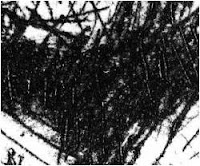
Moonflask sold $2,658,500 at Christie's New YorkSept. 15-16, 2011
Call it the "Antiques Roadshow effect" but In recent years everyone wants to know which markets are hot and which markets are getting hotter. If you are new to the art market you might be interested in what's a steal as opposed to what purchases might rob you. Today, much of the talk in the art world surrounds the Asian market. The growing population of wealthy Chinese consumers has piqued the interest of art sellers from auction houses to art galleries. The excitement also includes lesser known but no less influential games players such as high end art fairs and investment funds.
Despite this, there seems to be a lot of confusion in the art world about what is actually happening, what is really selling, and if Asian buyers are invested in the market for the long haul or are just participating in a buying frenzy. Many see the Asian art market as the next bubble. Others see the Asian market as the next best bet. Below are some facts to help sort out the confusion and to help you understand if you are willing to take a risk.
THE MARKET
There is no doubt that the summer was slow in terms of art sales and that the Asian art market has become more volatile. However, this fall, Chinese art works stole the show. The sale of Chinese classical painting held at Sotheby's nearly doubled the pre-sale estimates while a moonflask dating from 1736-1820 sold at Christies for $2.7 million and an 18th-century jade melon box sold for $2.1 million. Further, if the location of high- priced, high- profile contemporary galleries are an indicator of where the market is going, then Asia is the place to be. Gagosian Gallery now has a location in Hong Kong while White Cube and Lehmann Maupin continue to say that they have plans to follow suit next year. In May the Art HK fair was purchased by the most prestigious of art shows, Art Basel. It is also important to note that that there are at least forty art investment funds now in China.
THE POTENTIAL SLOW DOWN
With every boom there is, if not a bust, then a slow down. ArtTactic's latest consumer confidence report indicates that there has been a downturn in consumer confidence since June. This decreased confidence is likely a direct effect of the slowing Chinese economy which has propped up the art community's confidence in the art market. There has also been growing debate about why the Chinese are collecting; many believe that the growing wealthy class see art as nothing more than an investment and that once they see a better opportunity they will sell, causing the market to flood with works and prices to go down. Further, while there continues to be an aggressive market at auction for the best pieces, recent results have proved that other works are selling below their low estimates or are being "bought in" by the auction houses.
THE CONCLUSION
The art market can be confusing during normal economic times. However, when the economy is volatile and a new group of wealthy investors begin to enter the marketplace, opinions about the state of the market can change with every sale. What has become clear over the last year is that auction houses, art galleries, and a number of collectors have made significant investments in the art and antiques of Asia. While current speculation in the market will likely ensure future investment in Asian art overall there is a good chance that today's results will be seen as the peak of a bubble tomorrow.


